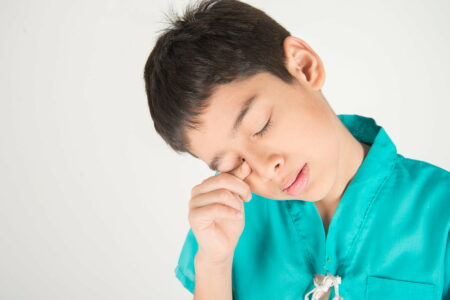Struggling to breathe can be an uncomfortable and distressing experience, especially for those who may have never seen or experienced it before.
If your shortness of breath isn’t caused by a medical emergency, there are a number of ways to help alleviate this condition. Many solutions simply involve changing your body’s position, which can help relax your airways. But first, let’s discuss the possible causes of breathing difficulty.
What causes difficulty breathing?
Some people may experience difficulty breathing suddenly and for just a short length of time, while others may be chronic sufferers. Generally, difficulty breathing is brought on by a common cause. These common causes include:
- Obesity
- Asthma
- Smoking
- Airborne allergens or pollutants
- High altitudes
- Strenuous exercise
- Anxiety disorders
Regular episodes of shortness of breath or difficulty breathing may also be signs of a serious health condition that requires medical attention. In this case, you should contact your doctor immediately to discuss your symptoms.
How can I treat difficulty breathing?
If you are experiencing difficulty breathing, here a few ways you can treat it at home:
1. Deep breathing exercises
Breathing in deeply and deliberately can help you manage shortness of breath. Try to:
- Lie down on a flat surface and place your hands on your abdomen,
- Breathe in deeply through your nose, and let your lungs fill with air,
- Hold your breath for 2-3 seconds,
- Breathe out slowly through the mouth.
- Repeat this exercise for 5 minutes.
Note: During this exercise, refrain from breathing too hard as this can cause lightheadedness/dizziness.
By practising this breathing technique on a flat surface, your body and airways will relax naturally, making breathing easier.
2. Pursed-lip breathing
By practising pursed-lip breathing, you can help to slow your breath and control any difficulty that you may be experiencing with your airways. It will also help to release any air that may be trapped in your lungs. Try to:
- Sit upright in a chair, and relax your neck and shoulder muscles,
- Slowly breathe in through your nose with your mouth closed,
- Keeping your lips tightly pressed and rounded (pursed), breathe out slowly and gently to the count of four.
3. Diaphragmatic breathing
Diaphragmatic breathing, sometimes called belly breathing, is a technique that engages your diaphragm and helps to ease shortness of breath. It can also help to decrease the demand for oxygen and the effort required to breathe. Try to:
- Sit upright in a chair and relaxed your shoulders, head, and neck,
- Place your hand on your belly,
- Breathe in at a slow pace, through your nose,
- Purse your lips and tighten your abdominal muscles as you release your breath,
- Place more emphasis on the exhale than the inhale. This means that you should exhale for twice as long as you inhale,
- Repeat this for practice five minutes.
4. Correct breathing during exercise
Whether you’re walking, running, swimming, cycling or resistance training, correct breathing during exercise is not only important for exercising safely and comfortably, but it will help to alleviate shortness of breath.
When engaging in exercise of any kind, ensure you are taking in regular, deep breaths – this will help in the transfer of oxygen.
Another tip to alleviate shortness of breath during exercise is to use your steps or the rhythm in your movement to help guide your breathing.
5. Handheld fan
According to one study, the use of a handheld fan can help to alleviate difficulty breathing. If you’re experiencing shortness of breath, try to point a small handheld fan towards your face and breathe as normal.
Note: This study did not find any improvements for individuals experiencing symptoms associated with underlying medical conditions.
6. Coffee
Researchers have found that caffeine also has the potential to alleviate shortness of breath. Caffeine can relax muscles in the airways of subjects who suffered from asthma – and improve lung function for up to four hours.
Scientists believe that this finding has to do with caffeine’s similarities to theophylline – a bronchodilator drug that is used to relieve symptoms of asthma, such as wheezing and shortness of breath.
When should I call a doctor?
If you’re experiencing a sudden medical emergency, have chest pain and/or you can’t get enough oxygen, dial 000 immediately and sit down with the door unlocked.
If you’re experiencing frequent shortness of breath and wheezing, make an appointment with your doctor. These may symptoms of an underlying medical condition.


